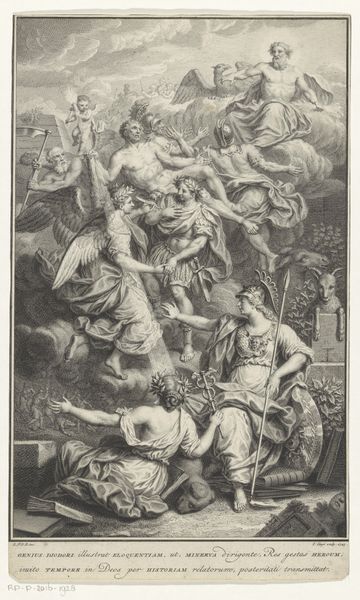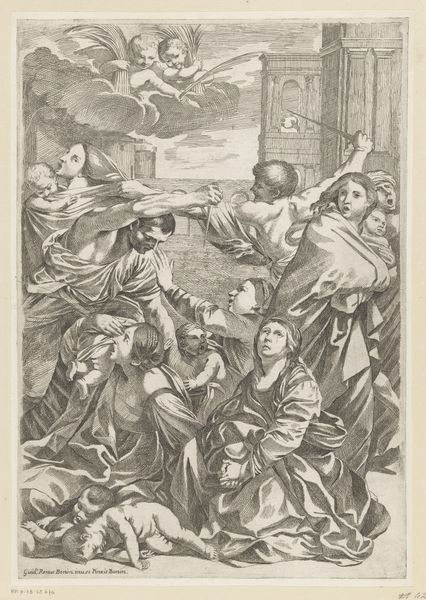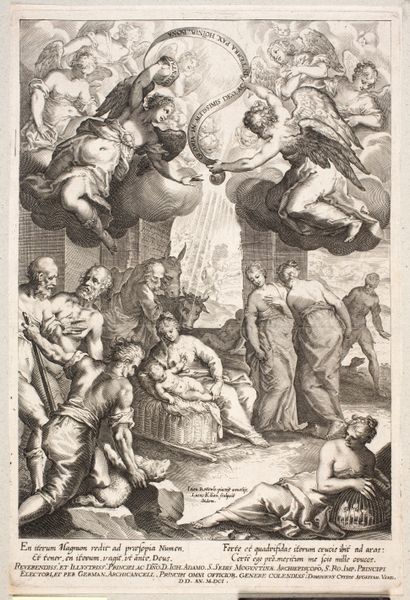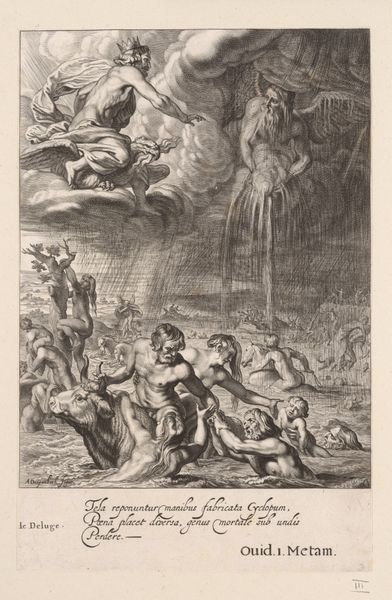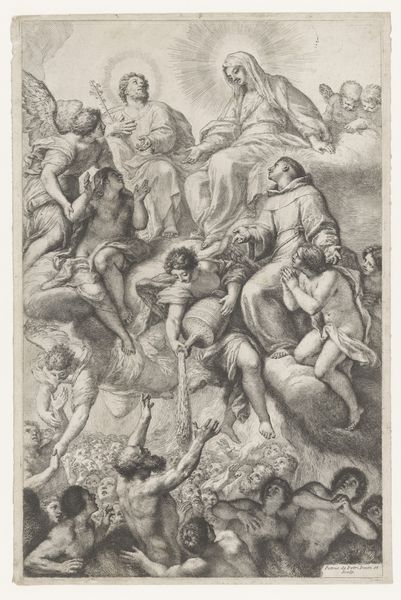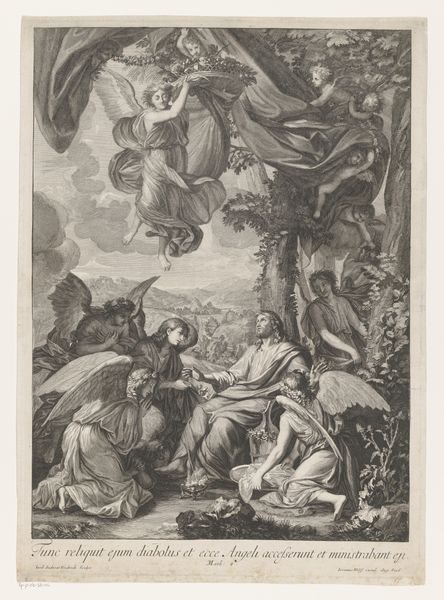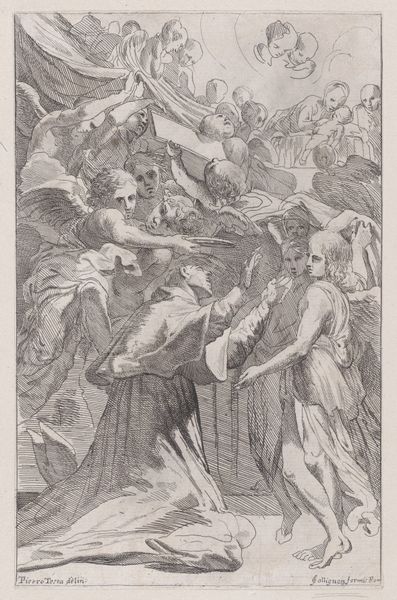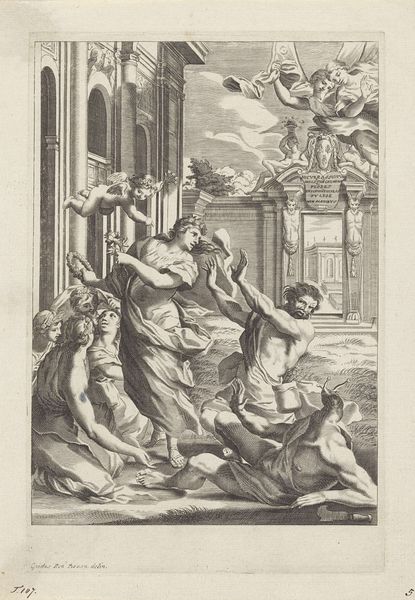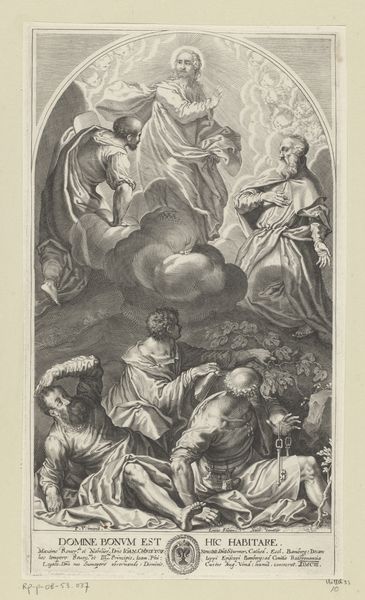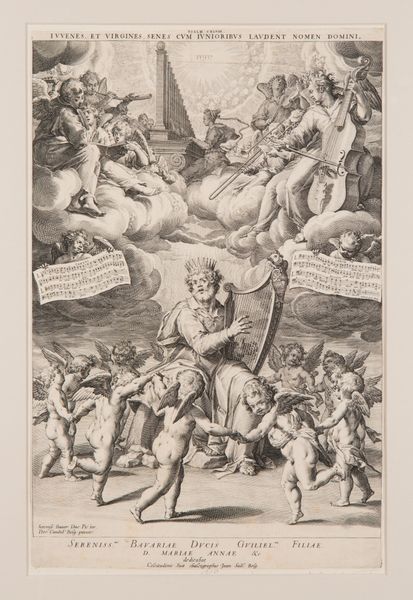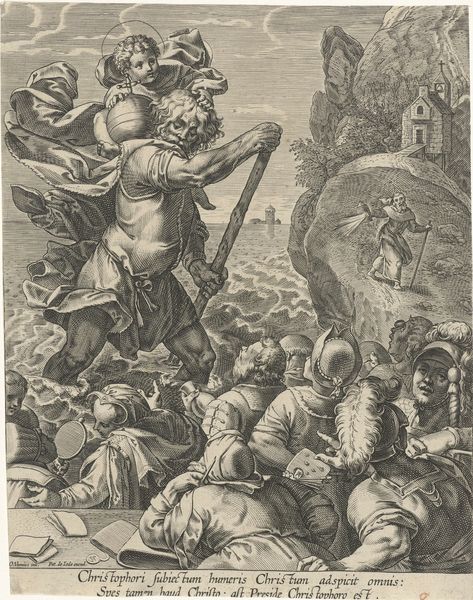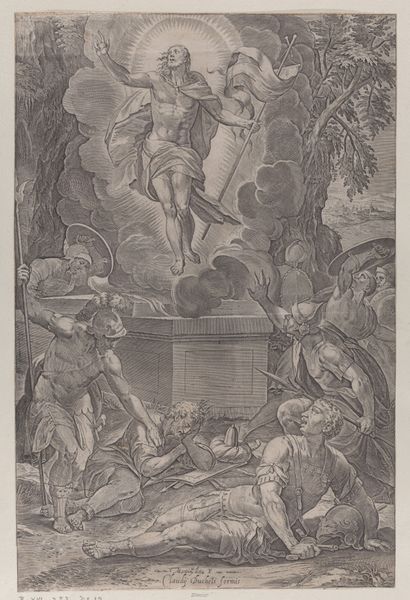
Cosmas en Damianus op de brandstapel, omgeven door soldaten en engelen 1645 - 1715
0:00
0:00
pierreisimon
Rijksmuseum
print, engraving
#
allegory
#
baroque
# print
#
figuration
#
history-painting
#
engraving
Dimensions: height 541 mm, width 329 mm
Copyright: Rijks Museum: Open Domain
Editor: Here we have "Cosmas en Damianus op de brandstapel, omgeven door soldaten en engelen", a print from somewhere between 1645 and 1715, by Pierre (I) Simon, housed at the Rijksmuseum. It depicts a chaotic scene; I’m struck by the sharp contrast between the violence at the bottom and the ethereal serenity of the angels at the top. What are your thoughts on it? Curator: The visual dichotomy you mention points towards a powerful engagement with the politics of imagery during that period. This engraving highlights not just a historical moment but the institutional frameworks used to disseminate moral narratives. What do you observe about the depiction of the soldiers and the so-called "victims?" Editor: Well, the soldiers seem like stock characters. But the… martyrs? They’re idealized, even in suffering. It almost seems like propaganda. Curator: Precisely. The Baroque style serves to elevate the martyrdom to a spectacle. Consider who was commissioning and consuming these prints. Was it for private devotion, or did these images have a broader public function in solidifying religious or political power? Editor: That makes sense. Seeing this as a tool to shape public opinion casts the whole artwork in a different light. Curator: How does recognizing the role of printmaking in early modern Europe affect your interpretation of the overall composition? Editor: Now I see it less as a snapshot of history and more as a carefully constructed argument about faith and power, distributed widely through the means of art available then. It makes me question who the real audience was and what messages they were intended to internalize. Curator: It's vital to see artworks not as isolated objects, but as agents within a broader social and political discourse. Examining its distribution informs its true power. Editor: This look into the role of art within its historical distribution really shows me that appreciating art extends far beyond aesthetics. Thanks!
Comments
No comments
Be the first to comment and join the conversation on the ultimate creative platform.
